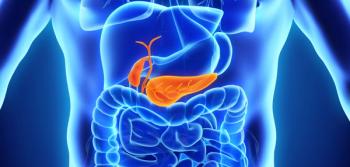
Clinical
Latest News
Latest Videos

CME Content
More News

Relapse remains a daunting reality in multiple myeloma, but clinicians have more tools to work with to fight the disease.

The authors say delivering FOLFOX via transarterial infusion could be a “perfect option for treating intrahepatic cholangiocarcinoma before patients receive targeted therapy, immunotherapy, or radiotherapy.

Dr Baljević explain some of the limitations physicians can come across with applying randomized clinical trial (RCT) data to MM treatment.

In this new study from Norway, artificial intelligence (AI) was used with mammography screenings to predict risk of breast cancer in women vs double reading of mammographic screening by independent radiologists.

A panel of experts elaborate on the decision support tools that are utilized by physicians to give patients high-value regimens.

Researchers reviewed clinical trial data of 19 FDA-approved treatments for non-small cell lung cancer.

A Monday session at the 2022 American Academy of Dermatology Annual Meeting discussed strategies for risk stratification and therapeutic management of nonmelanoma skin cancers.

It’s important that patients understand the likely outcomes, problems that can occur along the way, and the risks of a treatment or procedure, explained Robert G. Fante, MD, FACS, president of the American Society of Ophthalmic Plastic & Reconstructive Surgery and facial plastic surgeon and cosmetic surgeon, Fante Eye & Face Centre in Denver, Colorado.

Retrospective study findings show that CD47 expression on Hodgkin and Reed–Sternberg (HRS) cells varied between patients who had classical Hodgkin lymphoma (HL) and was associated with poor outcomes.

Panelists reviewed the latest advancements in clinical testing for melanoma, targeted therapy implications, and strategies for patient selection at a session on genetic and molecular testing at the 2022 American Academy of Dermatology (AAD) Annual Meeting.

The presence of antigen-specific and neutralizing antibodies was not associated with Clostridioides difficile infection symptoms, severity, therapy approach, treatment response, or recurrences in a new exploratory study.

Data from continuous glucose monitors were used to measure glycemic variability among patients with type 2 diabetes (T2D) and community-acquired pneumonia (CAP) hospitalized in Denmark between February and June 2021.

The study by the Veneto Institute of Oncology (IOV) in Padua, Italy, examined 286 patients for genomic mutations in cholangiocarcinoma as well as survival status.

Late-breaking findings at the 2022 American Academy of Dermatology Annual Meeting showed ruxolitinib cream was associated with clinically significant improvement in facial and total body repigmentation vs vehicle in the treatment of adolescent and adult patients with nonsegmental vitiligo over 52 weeks.

Jonathan Silverberg, MD, PhD, MPH, discusses key differences regarding epidemiology, genetic risk factors, and clinical manifestations of pediatric and adult-onset atopic dermatitis, as well as recommended therapeutic approaches for adult patients.

Although most SMA carriers can be identified through routine SMN1 copy number assessment data, approximately 4% of carriers who harbor 2 copies of SMN1 can go undetected.

Weight and changes in it can indicate implications for cancer risk and cancer diagnosis, according to 2 abstracts being presented at the American Association for Cancer Research Annual Meeting.

Jill Hutt, vice president of member services at the Greater Philadelphia Business Coalition on Health, explains the importance of offering the Diabetes Prevention Program online.

To enable a more personalized and proactive approach to pediatric antiphospholipid syndrome (APS), investigators assessed electronic medical records of 21 children.

Despite progress in chimeric antigen receptor (CAR) T-cell therapy, further research is needed to fully understand and overcome CAR T-cell exhaustion and improve outcomes.

Patients switched from the originator product maintained their clinical outcomes and remissions status while biologic-naïve patients recorded positive responses and remission outcomes after initiating infliximab-dyyb.

The authors of a new study say patients with certain mutations appear to respond to zanubrutinib, which had a favorable safety profile.

Investigators assessed potential biomarkers associated with poorly controlled asthma among patients in Tunisia.

Using statins led to a lower risk of parkinsonism, according to new research, which also found that statin use had an affect on the buildup of placques in the brain.

A recommendation to test for the mutation aligns with calls to identify biomarkers in cholangiocarcinoma to guide treatment.














































